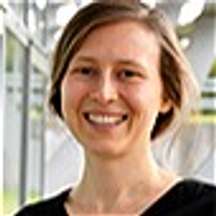
Computer science was the most logical thing for me to study. When I was in primary school my parents had a computer at home and I loved setting it up, installing software, and fixing anything that wasn’t working. In after school classes I enjoyed robotics and learning about binary numbers. My interest in computer science continued through secondary school to post-graduate level at university, where I was introduced to medical imaging, machine learning and neural networks. My Master of Sciences (MSc) in computer graphics, vision and imaging was full of enticing tasks with an array of new things to try.
My job at Diamond is to improve the user-experience of tomography, which is a technique that uses detailed imaging by sections or sectioning using X-rays from different angles. I assist with reconstruction software called Savu which helps create the final images users need. These can range from images of a tiny cell to images of the materials of an ancient manuscript. My past experience in image processing methods and computer science structure of software has proved useful for these tasks.
I love the variety of research at Diamond. There are always new scientists visiting and there’s always something new to investigate. The culture is caring, and I have a flexible schedule. I enjoy the constructive feedback I receive from people I work with, especially when they take time to listen.
To get a good overview, I’d suggest talking to people in my field as there isn’t one set path. You can also talk to a teacher or lecturer to decide what to focus on or what approach to take. It’s worth consulting textbooks on image processing and computer imaging or to try some image processing challenges or programming tasks online. There are plenty of courses to develop skills and explore options.
One of the user research projects involved brain imaging which I found very interesting. In my current project, I enjoy adding detail about the parameters for each algorithm/method used within the software. This provides more information for the user such as clearer feedback messages, catching errors before runtime. I find it extremely fun to track down what has caused errors in a piece of software and how to evaluate solutions. Another aspect is adding to the code and trying to add new features in a logical arrangement for the piece of code.
The fact that Diamond is the only synchrotron in the UK makes it unique. There are endless fascinating things to learn about how it operates, and the building is very cool and impressive! I really like being able to talk directly to the scientists who use the software. It’s a very sociable place and there are different activities one can get involved in, such as tour guide training for open days/visits, meeting up with graduates for lunch/coffee breaks, online yoga, and taking part in the Christmas choir!